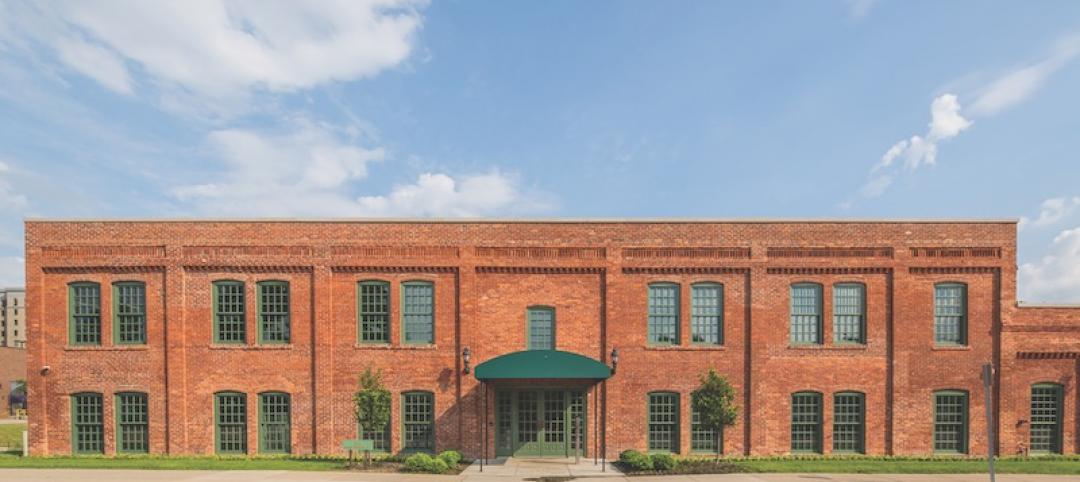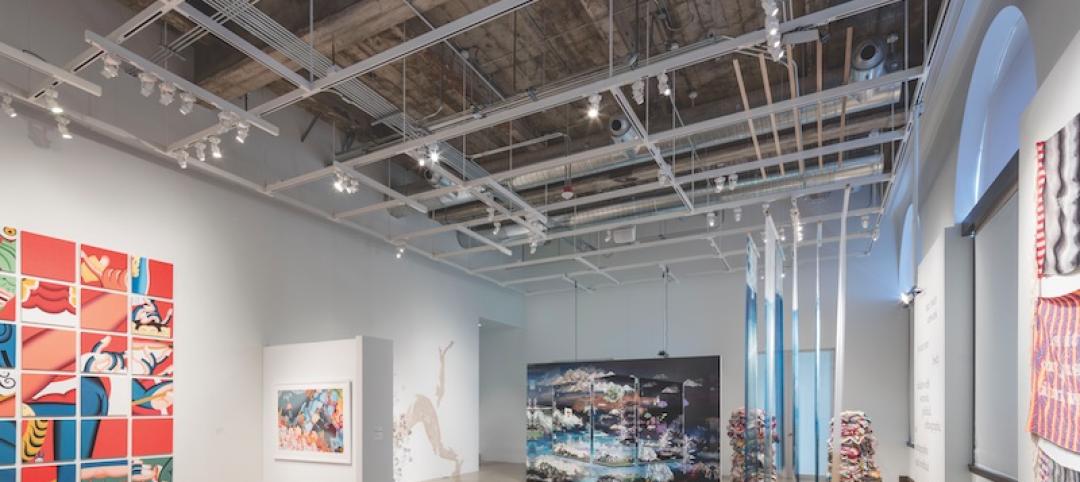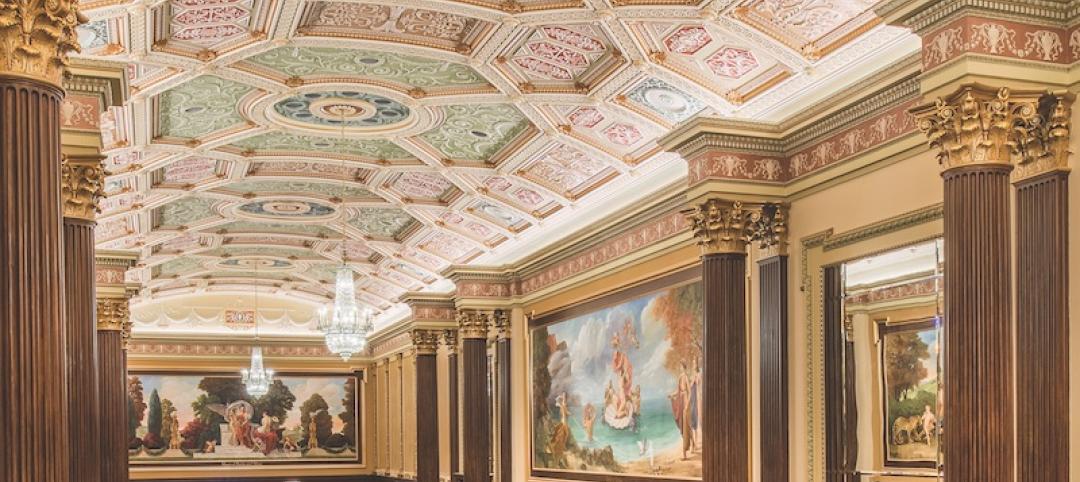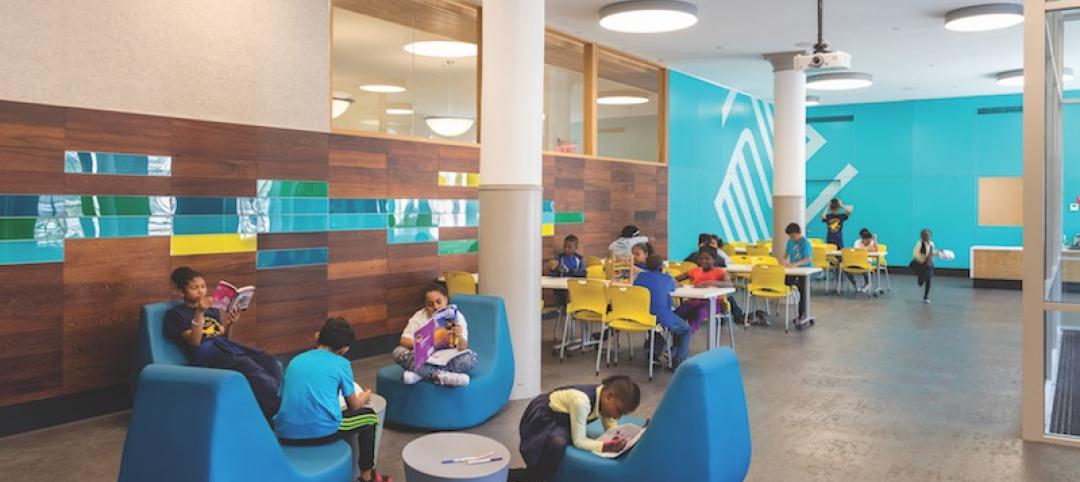In February 1974, a fire destroyed the Maryland Theatre’s original apartment building facade and ground floor theatre entrance, leaving a permanent void along the street fabric in Hagerstown, Md.
A new small lobby was built in 1978 and the interior was slowly renovated from 2010 to 2016, but for 46 years the theatre had zero street presence. A community effort to spur development in Hagerstown City Center looked to change that. In 2018, The Maryland Theatre renovation project began construction. The goal of the project was to expand the theatre’s draw and bring more patrons to the city center.
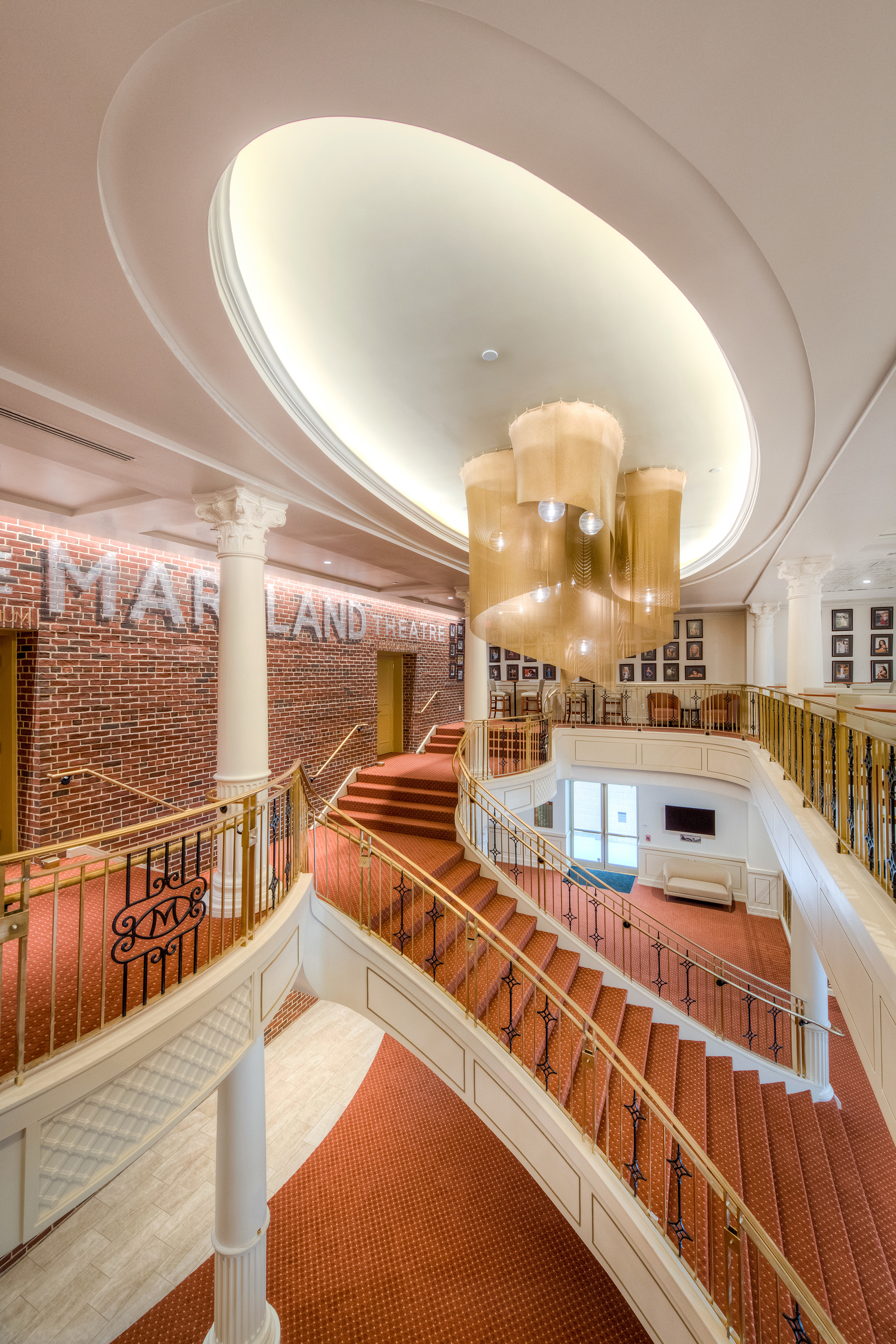
Grimm + Parker Architects designed a new 32,000-sf, five-story expansion that reclaims the theatre’s street presence and gives Hagerstown, Md., the public spaces it always needed. While in the past it was easy for visitors to walk or drive down the main city street and never notice the Maryland Theatre was even there, the new addition fills the urban void with a new eye-catching facade worthy of the theatre’s historic status.
Stained glass from the original building was salvaged and reused in the stair tower while a glass tile frieze, inspired but the theatre across the street, adorns the facade. The canopy design is based on the original canopy design that was destroyed in the 1974 fire.
In addition to creating a new street presence, the design also looked to correct many of the deficiencies with the existing theatre. Raising up the exterior theatre walkway improved functionality. The new walkway at grade created an ADA accessible stage loading door; allowed house right egress to be relocated at grade, making the theatre interior symmetrical; and created new space for a tunnel that gives performers access from front-of-house to back-of-house.
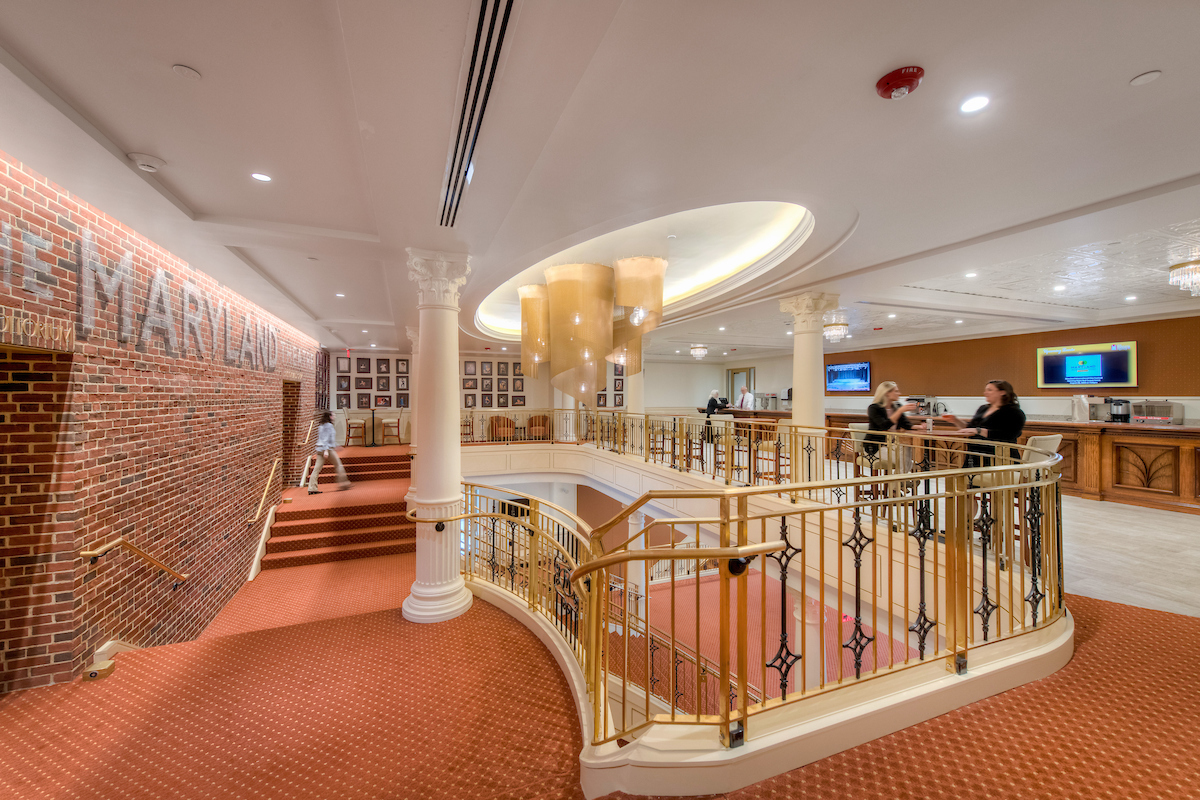
Theatre circulation was also improved. The original theatre had only one public entrance and exit, which created congestion when the up to 1,300 patrons exited after a show. The new addition increased circulation dramatically by providing egress in three more locations, adding additional front-of-house spaces, and improving overall safety.
Interior brick was used on the new addition to signify the Historic Theatre threshold. The brick features a painted sign similar to the one on the prominent exterior rear wall. The new lobby design, meanwhile, references the existing elliptical dome in the rear of the theatre. A new secure basement and bridge connection to the adjacent public Performing Arts High School allows high school students to use the rehearsal studio and stage.
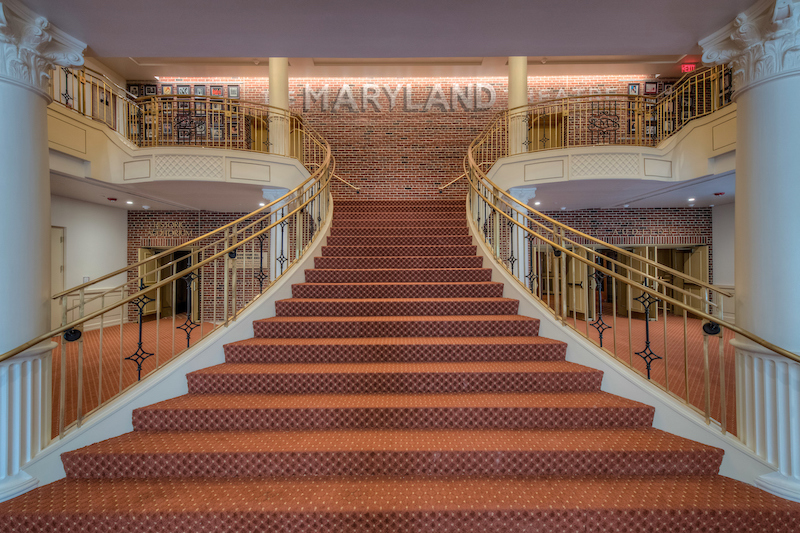
Floor one, the orchestra floor, features the theatre, the grand lobby, and offices. The second floor mezzanine features the theatre balcony, the new mezzanine lobby, a conference room, and Maryland Symphony Orchestra offices. The third floor includes a rehearsal studio, a volunteer lounge, dressing rooms, and a VIP lounge. The fourth floor comprises the Grand Ballroom and a catering kitchen. Restrooms and a gallery are included below grade.
The theatre was able to remain open for the majority of construction. Scaffolding was dressed up with sparkle lights, and plexiglass views to the work being done gave patrons a window into the building’s transformation.
PROJECT INFORMATION: Size 32,000 sf Construction start and finish June 1, 2018 - October 11, 2019 Cost $12,200,000 Delivery method Design/Bid/Build
BUILDING TEAM: Submitting firm Grimm + Parker Architects Owner/Developer The Maryland Theatre Architect Grimm + Parker Architects SE Matonak, Snyder & Associates MEP Alban Engineering Inc. GC Morgan-Keller Construction
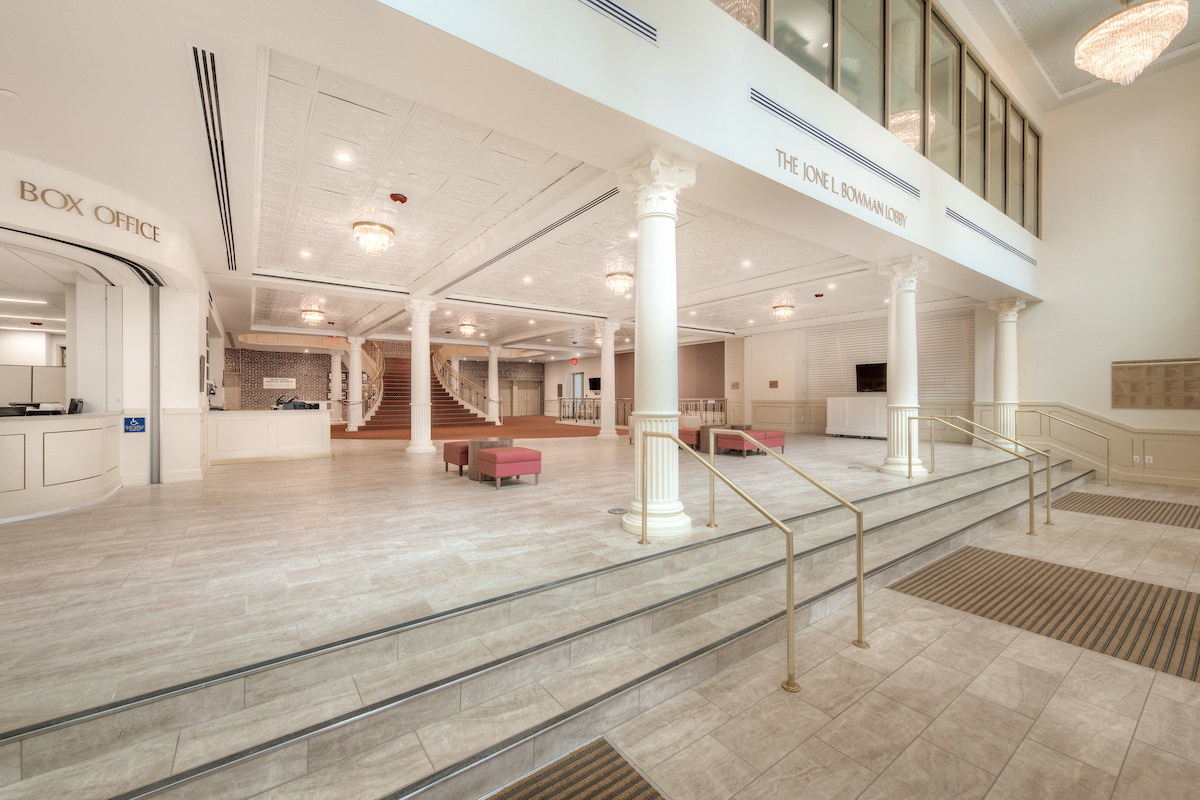
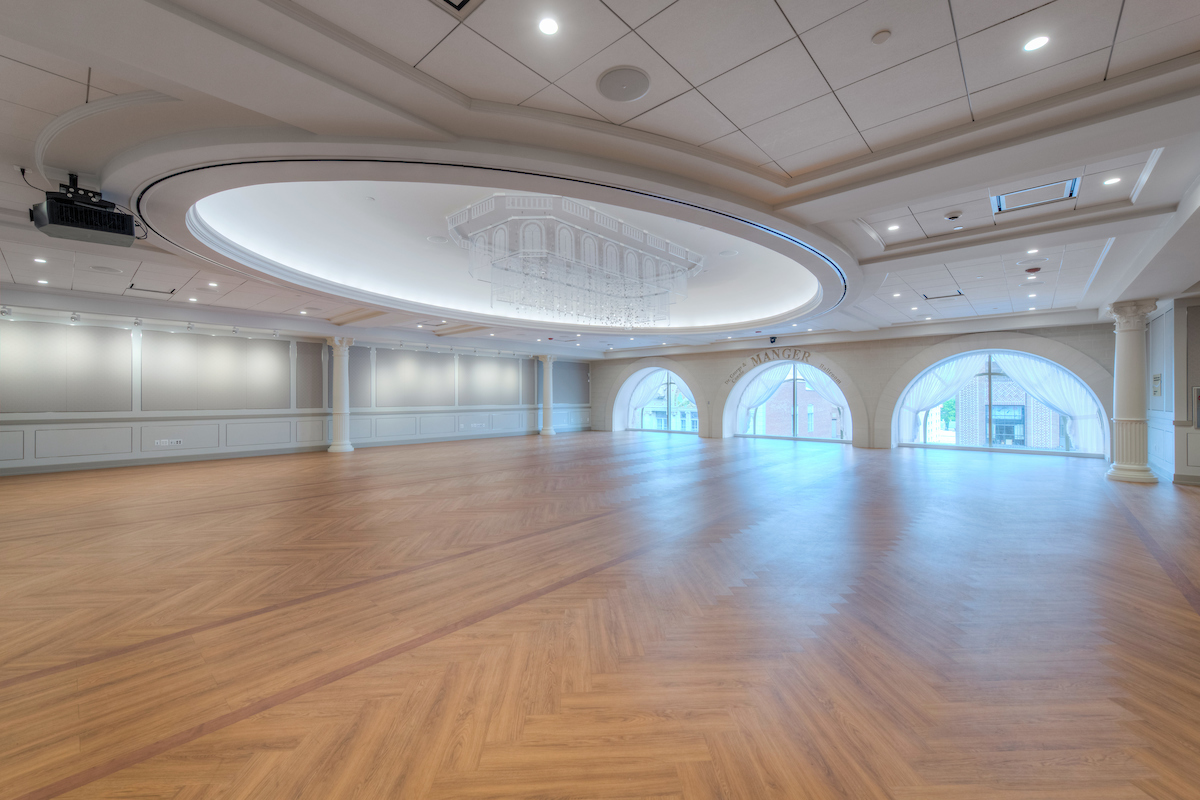
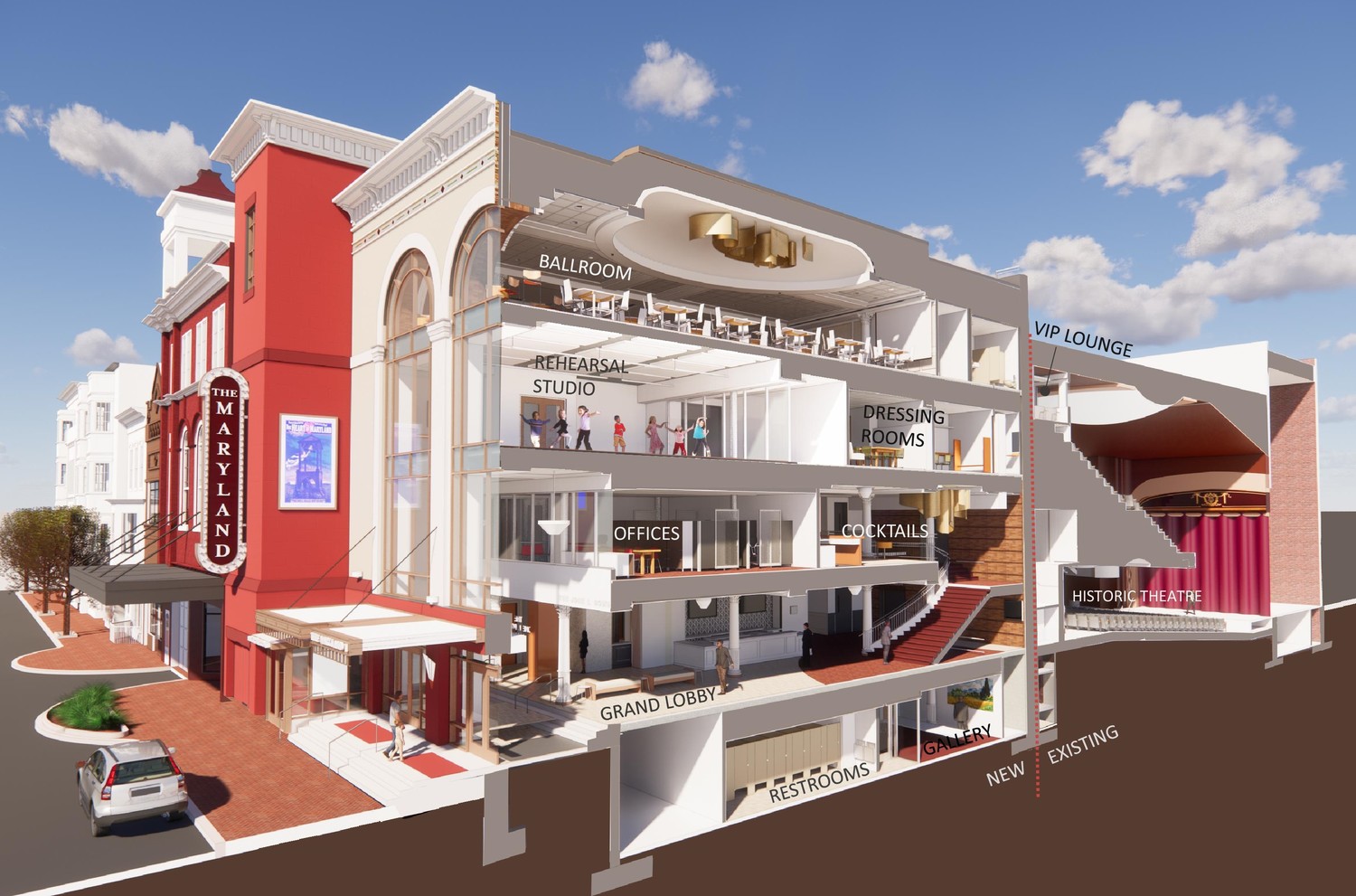
Related Stories
Reconstruction Awards | Nov 27, 2017
The birthplace of General Motors
The automotive giant salvages the place from which it sprang, 131 years ago.
Reconstruction Awards | Nov 21, 2017
Mama mia! What a pizzeria!: It started as a bank nearly a century ago, now it’s a pizza parlor with plenty of pizzazz
The first floor features a zinc bar and an authentic Neapolitan pizza oven.
Reconstruction Awards | Nov 21, 2017
Honor Guard: San Francisco’s historic Veterans Building pays homage to those who served in World War I and other foreign wars
The Veterans Building houses the War Memorial staff, the city’s Arts Commission, the Opera’s learning center and practice/performance node, the Green Room reception venue, and the 916-seat Herbst Theatre.
Reconstruction Awards | Nov 20, 2017
Eyes wide open: Students can see their new home’s building elements
The two-phase project revamped an opaque, horseshoe-shaped labyrinth of seven buildings from the ’60s and ’70s.
Reconstruction Awards | Nov 17, 2017
Gray lady no more: A facelift erases a landmark’s wrinkles, but not her heritage
The Building Team restored the granite and terra cotta façade and reclaimed more than 500 double-hung windows.
Reconstruction Awards | Nov 17, 2017
Elegance personified: New life for a neglected but still imposing retail/office space
The building was in such disrepair that much of the reconstruction budget had to go toward structural, mechanical, and electrical infrastructure improvements.
Reconstruction Awards | Nov 16, 2017
Back to the '20s: Coney Island gets a new eatery reminiscent of the past
This project included the restoration of the landmark Childs Restaurant.
Reconstruction Awards | Nov 15, 2017
Foyer fantastique: Faded images provide the key to a historic theater's lobby restoration
The restoration relied heavily on historic photos and drawings.
Reconstruction Awards | Nov 14, 2017
Hallowed ground: A Mormon temple rises from the ashes of a fire-ravaged historic tabernacle
Parts of the tabernacle’s exterior shell were the only things that survived the blaze.
Reconstruction Awards | Nov 13, 2017
Harlem Renaissance: A vacant school provides much-needed housing and a clubhouse for children
Word that PS 186 might be demolished brought out the preservationists, whose letter-writing campaign gained the support of the New York Landmarks Conservancy.



